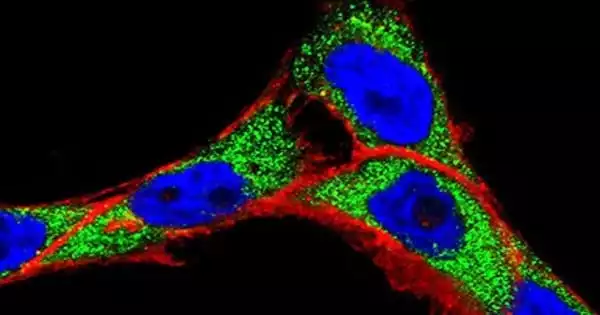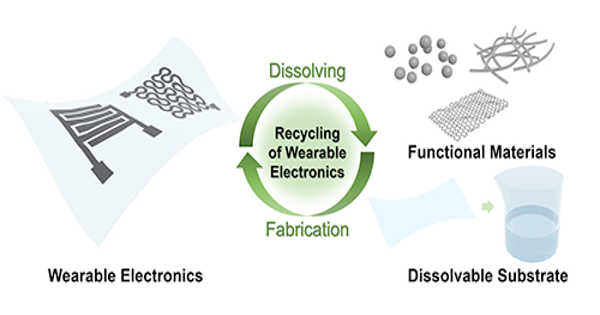In order to deliver on the promise of 5G Internet of Things (IoT) networks, communication systems must be more scalable, durable, and able to deliver significantly faster data rates with the significantly reduced power consumption per device.
The low cost, low complexity, and battery-free functioning of backscatter radios, passive sensors that reflect energy rather than radiate it, make them a possible important facilitator of this future even if they typically have modest data rates and their performance is highly dependent on the environment.
Researchers from the Georgia Institute of Technology, Nokia Bell Labs, and Heriot-Watt University have discovered a low-cost method for backscatter radios to support high-throughput communication and 5G-speed Gb/sec data transfer using only a single transistor, as opposed to the pricey and multiple stacked transistors that were previously needed.
The researchers have demonstrated that these passive devices can carry data securely and stably from almost any location using a novel modulation technique in the 5G 24/28 GHz spectrum.
The results were published in the journal Nature Electronics earlier this month. Broadband transmissions via directional point-to-point and point-to-multipoint wireless networks are traditionally referred to as “the last mile” using mmWave communications, also known as the extremely high-frequency band.
This radio range has a lot of benefits, including a lot of GHz bandwidth that can be used for very high transmission speeds and the implementation of electrically huge antenna arrays that allow for beamforming capabilities on demand. However, these mmWave systems rely on expensive systems and parts.
The Struggle for Simplicity Versus Cost
“Typically, it was simplicity against cost. You could either do very simple things with one transistor or you need multiple transistors for more complex features, which made these systems very expensive,” said Emmanouil (Manos) Tentzeris, Ken Byers Professor in Flexible Electronics in Georgia Tech’s School of Electrical and Computer Engineering (ECE). “Now we’ve enhanced the complexity, making it very powerful but very low cost, so we’re getting the best of both worlds.”
“Our breakthrough is being able to communicate over 5G/millimeter-wave (mmWave) frequencies without actually having a full mmWave radio transmitter only a single mmWave transistor is needed along much lower frequency electronics, such as the ones found in cell phones or WiFi devices. Lower operating frequency keeps the electronics’ power consumption and silicon cost low,” added first author Ioannis (John) Kimionis, a Georgia Tech Ph.D. graduate now a member of technical staff at Nokia Bell Labs. “Our work is scalable for any type of digital modulation and can be applied to any fixed or mobile device.”
Typically, it was simplicity against cost. You could either do very simple things with one transistor or you need multiple transistors for more complex features, which made these systems very expensive. Now we’ve enhanced the complexity, making it very powerful but very low cost, so we’re getting the best of both worlds.
Professor Emmanouil (Manos) Tentzeris
As the first to employ a backscatter radio for gigabit-data-rate mmWave communications while keeping the front-end complexity to a single high-frequency transistor, the researchers have reduced the complexity of the system. Their innovation involved modulating the signal that powers the device as well as giving it greater intelligence.
“We kept the same RF front-end for scaling up the data rate without adding more transistors to our modulator, which makes it a scalable communicator,” Kimionis said, adding that their demonstration showed how a single mmWave transistor can support a wide range of modulation formats.
Powering a Host of ‘Smart’ IoT Sensors
With the use of a unique Rotman lens that gathers 5G electromagnetic radiation from all angles, Georgia Tech researchers recently demonstrated energy harvesting, one of the many IoT 5G applications made possible by the technology.
Additional uses for the backscatter technology, according to Tentzeris, could include “rugged” high-speed personal area networks with zero-power wearable or implantable sensors to track blood oxygen or glucose levels or cardiac or EEG functions; smart home sensors that track temperature, chemicals, gases, and humidity; and smart agricultural applications to track livestock or detect frost on crops.
An early proof of concept for this backscatter modulation was created by the researchers, and it took third place in the 2016 Nokia Bell Labs Prize. At the time, Kimionis was a doctorate student in the Georgia Tech ECE department working with Tentzeris in the ATHENA lab, which develops new technologies for applications in millimeter-wave, sub-terahertz, wireless, and RF spectrums.
Key Enabler of Low Cost: Additive Manufacturing
For Kimionis, the backscatter technology breakthrough reflects his goal to “democratize communications.”
“Throughout my career I’ve looked for ways to make all types of communication more cost-efficient and more energy-efficient. Now, because the whole front end of our solution was created at such low complexity, it is compatible with printed electronics. We can literally print a mmWave antenna array that can support a low-power, low-complexity, and low-cost transmitter.”
Tentzeris believes that accessible printing is essential to the market viability of their backscattering technology. Inkjet printing on almost any material (paper, plastics, glass, flexible/organic substrates) was invented at Georgia Tech, which was also one of the first research institutions to use 3D printing up to millimeter-frequency ranges in 2002.
Apostolos Georgiadis and Spyridon Nektarios Daskalakis, two former Georgia Tech visiting professors who are currently on the faculty of the Herriot-Watt University School of Engineering and Physical Sciences in Edinburgh, were additional researchers who worked on this project.
This work was supported by the National Science Foundation-EFRI, the Defense Threat Reduction Agency (DTRA) and by the European Union Horizon 2020 Research and Innovation Programme under the Marie Sk?odowska-Curie grant agreement.
















